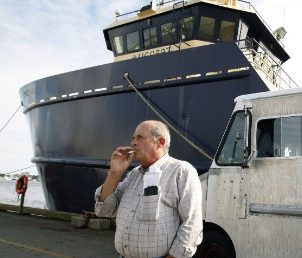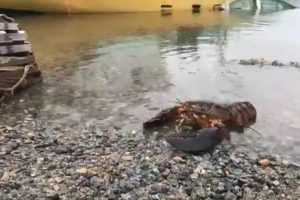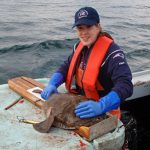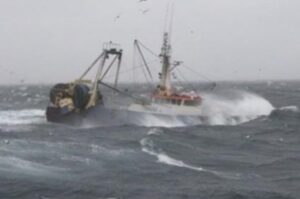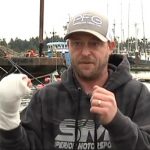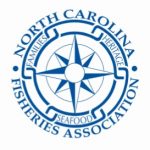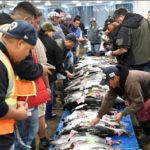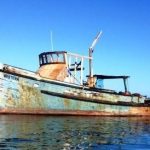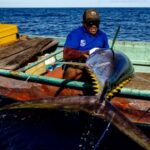Tag Archives: Northeast Seafood Coalition
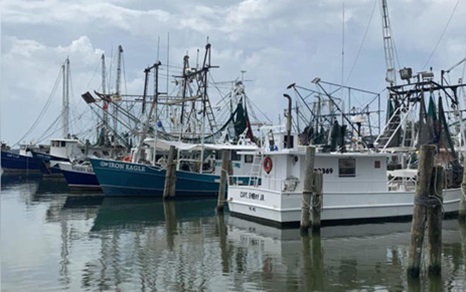
Seafood industry groups unite to oppose bill that would limit bottom trawls
A bill introduced last month in the U.S. House of Representatives that could place limits on trawling by fishermen and shrimpers is drawing the fire of seafood industry groups from Alaska to Florida. House Resolution 8507, the Bottom Trawl Clarity Act, would require the nation’s eight regional Fisheries Management councils, some of which allow fishing trawls to scrape the bottom, to define the terms “substantial” versus “limited” contact of the bottom. The bill is authored by U.S. Rep. Mary Peltola, D-Alaska, who said in a summary of the legislation that “limiting the areas where bottom trawling is allowed will help enhance marine health, diversity, and resilience, strengthening the ocean ecosystem that Alaska fishermen depend on.” more, >>CLICK TO READ<< 16:15
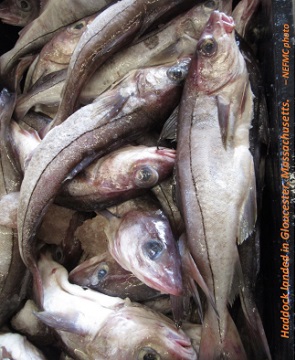
Haddock stock decline prompts catch limits
A low New England haddock stock has prompted regulators to cut the fishing quota of one of the region’s most popular fish. A staple in fish and chips and for fish burgers and home cooks, the amount available from the Gulf of Maine and Georges Bank for 2023 will be more than 80 percent less than the previous year. Prices are relatively high for shoppers, too, with Hannaford, Shaw’s and local fish dealers asking anywhere from $11.99 to $14.99 per pound this month for wild caught Gulf of Maine haddock. Haddock is “subject to overfishing” in the Gulf of Maine while the Georges Bank stock is not, according to NOAA Fisheries. >click to read< 19:02

Fishermen: Haddock limits to lead to shutdown
In two tows during a fishing trip in March, Gloucester fisherman Joe Orlando caught what could have been almost his entire allocation for Gulf of Maine haddock under catch limits proposed for fishing year 2023, which begins May 1. Orlando harvested 7,000 pounds in those two tows, about a half day’s worth of fishing, Jackie Odell, executive director of the Northeast Seafood Coalition pointed out to members of the New England Fishery Management Council, NOAA Fisheries and others in an email. His allocation for the upcoming fishing year is expected to be 8,000 pounds. >click to read< 07:57
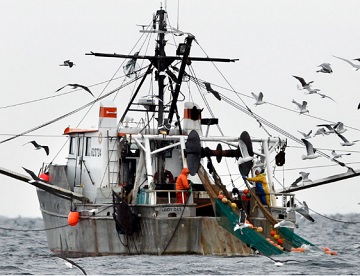
New monitoring rules for Northeast fishermen
Changes to U.S. rules about the monitoring of Northeast commercial fishing activities are going into effect this month with a goal of providing more accurate information about some of the nation’s oldest fisheries. The U.S. mandates observers to work onboard fishing boats to collect data and make sure fishermen adhere to rules and quotas. The National Marine Fisheries Service has adopted new monitoring rules for Northeast fishermen of groundfish, like haddock and flounder, to try to improve the accuracy of the data. >click to read< 11:57
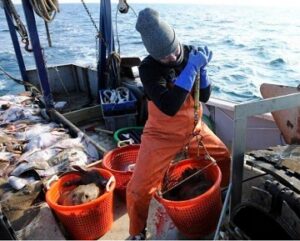
Rule change calls for monitoring of all groundfish trips – Not everyone is on board.
The most significant proposed change is a monitoring coverage target of 100% aboard eligible trips, which is higher than present monitoring levels. The change is meant to remove uncertainty surrounding catch. This and other changes, known as Amendment 23, to the Northeast Multispecies Fishery Management Plan were developed by the New England Fishery Management Council. According to a NOAA Fisheries fact sheet, the changes, if approved by NOAA Fisheries, would give groundfish vessels the choice of a human observer or using one of two types of electronic monitoring to meet the increased monitoring requirements, provided the sector has a corresponding approved monitoring plan and a contract with an approved service provider. >click to read< 12:37

Fishermen not feeling the effects of ‘marked decrease’ in Atlantic cod population
What started as a research presentation on rising ocean temperatures and decreasing cod supply by NOAA quickly turned into a revealing conversation about how scientists and their data often do not reflect fishermen’s experiences. Findings by a working group of researchers indicated that the lifecycle of the species is being influenced by the environment, specifically rising ocean temperatures, which have changed the fish’s spawning behavior and their predator-prey relationships. Fishermen did question is whether these facts are having the same implications that the researchers believe. Al Cottone, a Gloucester fisherman, says he feels cod are in different areas, and that he has noticed a change in the tides, too. >click to read< 10:56
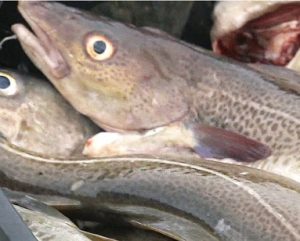
New England: Fishery groups question cod limits
Two fishing industry trade associations are asking the New England Fishery Management Council to reevaluate its drastically reduced catch limit recommendations on Georges Bank cod. The groups, the Gloucester-based Northeast Seafood Coalition and the Associated Fisheries of Maine, say the New England Fishery Management Council’s Scientific and Statistical Committee lacked “relevant information” to make its determination on an Acceptable Biological Catch for Georges Bank cod. They are asking for a remand. >click to read< 09:25
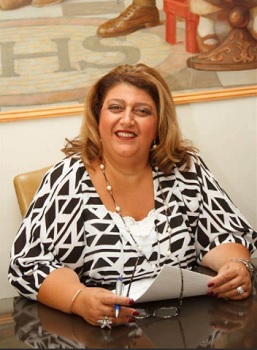
New England Fishery Management Council pick disappoints Gloucester Mayor – feds pulling bait-and-switch
Gloucester Mayor Sefatia Romeo Theken on Tuesday said the June 28 decision to appoint recreational fishing stakeholder Michael J. Pierdinock of Plymouth instead of Northeast Seafood Coalition Executive Director Jackie Odell “was a serious oversight which has not gone unnoticed” by commercial fishing stakeholders. Romeo Theken did not directly criticize Baker for his recommendation to Commerce Secretary Gina Raimondo, who had final say on the council appointment. But New Bedford Mayor Jon Mitchell did.,,, >click to read< 12:19

Editorial: Cost of at-sea monitors is unfair, cost prohibitive.
Imagine trying to run a Main Street business, a restaurant or gift shop, maybe during the pandemic. A cratered economy and the threat of disease make each day a challenge and the future uncertain. Now imagine the government dropping another $700 in fees on you every time you open your doors. There’s no way your mom-and-pop operation could survive. The New England Fishery Management Council, which essentially sets the rules for commercial fishing in the region, will meet next week to decide how often monitors will be required on fishing vessels. Early indications are that councilors will require a monitor on every trip, with the average cost of $700 to be borne by fishermen. >click to read< 08:42
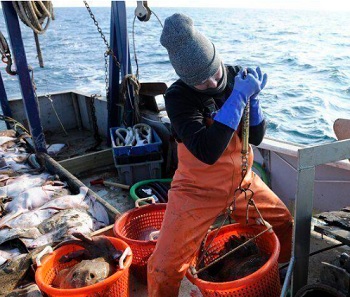
Fishing group asks Baker to fight ‘crippling’ monitor measure
The Northeast Seafood Coalition is trying to enlist Gov. Charlie Baker in its campaign against the monitoring measure that it charges has the “strong potential” to financially cripple the state’s commercial groundfish industry. The Gloucester-based coalition sent Baker a letter last Friday laying out its case that Amendment 23, which will set future monitoring levels for sector-based, Northeast commercial groundfish vessels is highly flawed and should be withdrawn by the New England Fishery Management Council. >click to read< 12:47
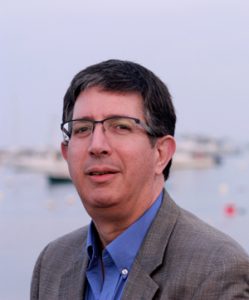
NOAA calls for monitors on all groundfish trips, calls for Public Comments on proposal
The draft amendment to set at-sea monitoring coverages aboard all Northeast groundfish vessels has led an adventurous existence in the three years the New England Fishery Management Council has dedicated to developing the contentious measure. There was last year’s partial shutdown of the federal government that delayed the rule-setting process. The council, in March 2018, also chose to tap the brakes on the development of the measure known as Amendment 23, >click to read< 20:28
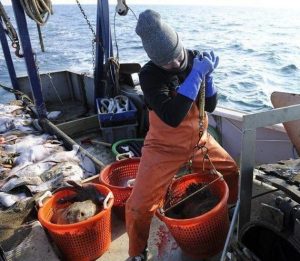
Northeast Seafood Coalition questioning the NEFMC fish monitoring regulation process
The New England Fishery Management Council is set to resume action on the contentious groundfish monitoring amendment next week, but the Gloucester-based Northeast Seafood Coalition is questioning whether the council is rushing its own process and operating with incomplete information. The council, scheduled to meet for three days next week in Portsmouth, New Hampshire, will return Wednesday to the arduous task of completing Amendment 23, which will set monitoring levels for vessels operating within the Northeast multispecies groundfish fishery. >click to read< 13:36
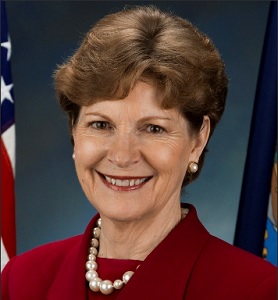
Fishing Money found for at-sea monitors
As part of a $1.4 trillion spending package, the U.S. Senate passed a $79.4 billion appropriations bill that includes another $10.3 million for NOAA Fisheries — once again secured by New Hampshire Sen. Jeanne Shaheen — to fully fund at-sea monitoring in the Northeast groundfish fishery for the 2020 fishing season that begins May 1. When President Donald Trump signed the bill into law the next day, the mandated shouldering of the full financial weight of at-sea monitoring by the groundfish industry — at a cost of up to $700 per day per vessel — had been deferred for at least another fishing season. >click to read< 12:24
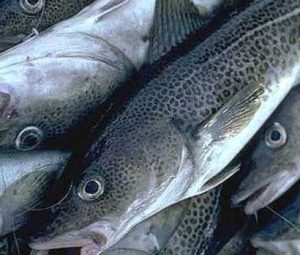
Cod could choke catch of other fish
The New England Fishery Management Council approved the management framework that sets Northeast multispecies groundfish catch limits for 2020-2022 earlier this month. And local groundfishermen are looking at significant increases in several flounder stocks, American plaice and haddock. But the state of the cod fishery in the Gulf of Maine and on Georges Bank remains a point of contention. >click to read< 09:06

‘There’s no margin’ – Monitors final nail in coffin Feds propose up to 100% fish-counting, unclear on who’s on hook for costs
Groundfishermen, speaking Wednesday afternoon during the public comment period, drew a straight line from the increased monitoring costs to the economic collapse of the fishery. “I made 124 trips last year and each day was 10-14 hours,” said Gloucester fisherman Joe Orlando. “At $700 a day for 100% monitoring, that comes to $84,000 for the year. I didn’t even come close to making that. It would completely bankrupt the sector. And there’s only a handful of us left.” >click to read< 19:45
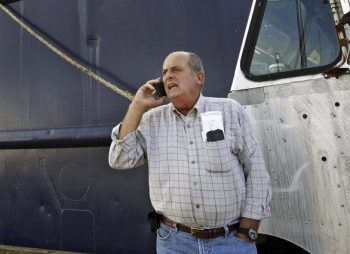
NOAA to vet buyers, Carlos Rafael divesting fleet as part of civil settlement, serving time in criminal case
Charles Green, the acting chief of the enforcement section of NOAA’s office of general counsel, told the New England Fishery Management Council that Rafael has closed on three vessels and their associated permits. The enforcement section of the agency’s general counsel’s office negotiated the final settlement with the fishing mogul, once known as the Codfather, in the civil case brought by NOAA,,, As part of the settlement that resolved all civil charges, Rafael agreed to a full divestiture of all vessels and associated permits, $3.3 million in civil penalties and a lifetime ban,,, >click to read< 21:24
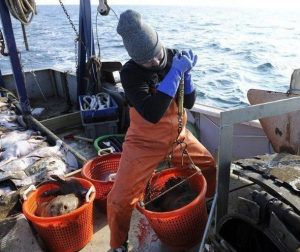
Groundfishermen not hooked by monitoring alternatives
For more than two years, the New England Fishery Management Council has worked on an intricate groundfish monitoring amendment that could have wide-scale economic and regulatory consequences for groundfishermen. It has been a thorny, winding path that involves a host of groundfish committees, plan development teams and assorted staff within the far-flung fisheries regulatory landscape. Now a group of groundfishermen are weighing in. And they are not pleased. >click to read<07:53
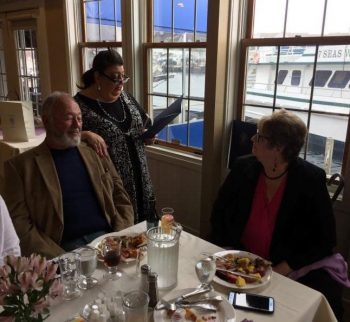
Northeast Seafood Coalition loses longtime staffer to retirement
They threw a little party for Christine Sherman on Friday at the Gloucester House Restaurant, a little brunch with friends, family and colleagues, all of whom had collected to wish Sherman good luck upon her retirement from the Northeast Seafood Coalition. The coalition was formed in 2002 and Sherman, the wife of longtime fisherman Russell Sherman, was one of the first ones through the door, first as a volunteer and later as a staffer extraordinaire. “She served in so many capacities over 17 years,” said Jackie Odell, NSC executive director. >click to read<14:48
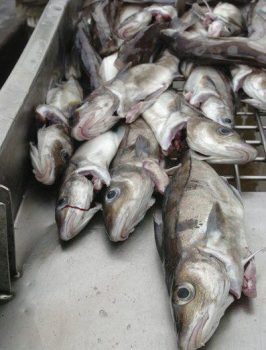
Groundfish quota changes up for debate
The proposed rule, called Framework 58, calls for increasing the commercial quota for Georges Bank cod by 15 percent, Georges Bank haddock by 19 percent and Georges Bank winter flounder by 6 percent for the new fishing season that is set to begin Wednesday. It also includes a 1 percent increase for witch flounder. That’s the good news. The bad news is that the proposed rule, published in the Federal Register, calls for a whopping 50 percent cut to the annual catch limit for Georges Bank yellowtail flounder, a 1 percent reduction in the quota Gulf of Maine winter flounder and a 3 percent cut to the catch limit for Atlantic halibut. >click to read<22:43
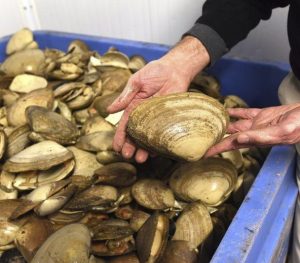
Fishermen backing surf clammers in fight over harvest area
Groundfish stakeholders are supporting the surf clam industry’s efforts to retain fishing rights in pockets of the Great South Channel of the Nantucket Shoals as long as the approved management policy does not prompt “mitigations or further habitat restrictions on the groundfish fishery.”,,, On Tuesday, the New England Fishery Management Council, meeting in Newport, Rhode Island, is expected to decide whether one of the more lucrative fishing grounds for the surf clam fishery — 10 to 20 miles east and southeast of Nantucket — will remain open to surf clamming or restricted or closed as part of a protectionist effort to designate the full area as an essential fish habitat that would be off limits to surf clamming dredging gear. >click to read<06:55
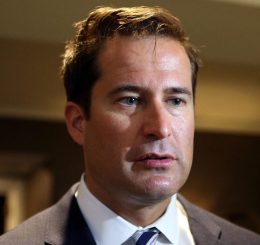
Moulton votes no on H.R. 200
U.S. Rep. Seth Moulton voted against the House bill to reauthorize the Magnuson-Stevens Act on Wednesday because the bill undermines efforts to improve the science used to generate stock assessments and pits fishing stakeholders against each other, the congressman said in a statement Friday.,,, “Over the past three years and through numerous conversations with fishermen, scientists and environmental groups, one thing has been made abundantly clear: We need to improve the science behind our federal stock assessments,” Moulton stated. “The reauthorization of Magnuson-Stevens undermines our efforts. We need everyone on the same page. We all want sustainable fisheries for today and future generations and we shouldn’t have to pit one group of fishermen against another to achieve that.”>click to read<09:04

Hitting the Trail: NOAA’s GARFO leader looks to cultivate culture of collaboration
As debuts go, Mike Pentony’s first day on the job as the regional director for NOAA’s Greater Atlantic Regional Fisheries Office was a corker. The federal government marked his ascension on Jan. 22 as only the federal government can — shutting down all but the most essential government services as a consequence of the usual congressional mumbley-peg. “My first action was to come in and proceed with the orderly shutdown of government operations,” Pentony said recently during an interview in the corner office on the uppermost floor of GARFO headquarters in Gloucester’s Blackburn Industrial Park. The respite was short-lived. The shutdown lasted a day. >click to read< 23:52
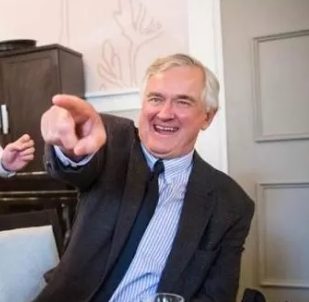
While setting New England fishery rules, John Bullard was an exception
He’s been called a Neanderthal and the most reviled man in the region’s fishing community. At a public meeting broadcast on national TV, a fisherman once accused him to his face of lying for a living. As the regional fisheries administrator of the National Oceanic and Atmospheric Administration, John Bullard has drawn ire from all sides — fishermen, environmentalists, and politicians alike. His decisions have been routinely controversial, and he has rarely minced words in defending them. click here to read the story 20:53
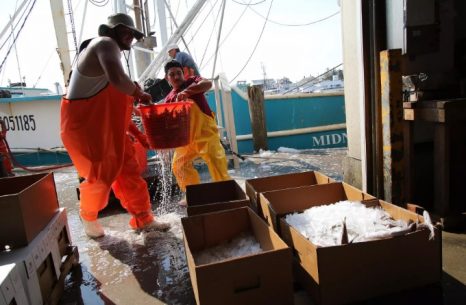
Something fishy in the quotas?
The clatter reverberated in the refrigerated cold as workers offloaded fish and wheeled full bins into a storage area on Fisherman’s Wharf. The catch was sorted, weighed, labeled, and eventually loaded onto large trucks headed for New York. It was a big haul, but not a big payday for Tom Testaverde Jr., captain of the Midnight Sun. “Our season’s been good. We caught a lot of fish, but the prices have been killing us all year,” Testaverde said. He pointed to imports that drive prices down, and regulations that limit what kinds of fish he can catch. Those federal limits on some species — particularly groundfish such as cod and flounder — are at odds with what commercial fishermen say they are seeing in the ocean. click here to read the story 14:34

Northeast Seafood Coalition – Gov. Charlie Baker confirmed, attending annual fundraiser
When fishermen and supporters gather for the Northeast Seafood Coalition’s annual fundraiser Thursday night, they will be joined by one of their highest-profile backers. Gov. Charlie Baker has confirmed he will be on hand for the coalition’s gala, slated to begin at 6 p.m. at The Gloucester House restaurant. There, participants will raise money through ticket sales and a live auction to help the industry gain new inroads for developing effective science in tandem with federal and state regulators, all while sampling seafood caught in the previous 24 hours. “We see this event as the start of a push to obtain the science consultants and the help that we need,” said John Bell, the former Gloucester mayor who is a coalition co-founder and serves as head of its board of directors. (They may have a few tickets left!) click here to read the story 20:45
Northeast Seafood Coalition skeptical of proposed new rules
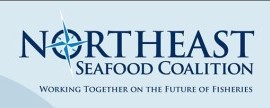 The Northeast Seafood Coalition has submitted public comments for the proposed rules for the Northeast Fishery Management Plan that reiterate its lack of confidence in NOAA’s current system of scientific assessments for groundfish. The comments from the Gloucester-based NSC, submitted to NOAA Fisheries before Tuesday’s deadline, question the reported status of the witch flounder stock and sets the fishing advocacy group in opposition to the proposed allowable biological catch limit of 460 metric tons or the 2016 fishing season. “NSC expressed concern with the reported status of witch flounder during the public process,” the coalition said in its comments, which also reference the group’s “expressed concern that catch rates within the fishery are completely inconsistent with the reported stock status from the assessment.” Read the rest here 15:20
The Northeast Seafood Coalition has submitted public comments for the proposed rules for the Northeast Fishery Management Plan that reiterate its lack of confidence in NOAA’s current system of scientific assessments for groundfish. The comments from the Gloucester-based NSC, submitted to NOAA Fisheries before Tuesday’s deadline, question the reported status of the witch flounder stock and sets the fishing advocacy group in opposition to the proposed allowable biological catch limit of 460 metric tons or the 2016 fishing season. “NSC expressed concern with the reported status of witch flounder during the public process,” the coalition said in its comments, which also reference the group’s “expressed concern that catch rates within the fishery are completely inconsistent with the reported stock status from the assessment.” Read the rest here 15:20
Environmentalists, Fishermen At Odds Over Turning Cashes Ledge Into National Monument
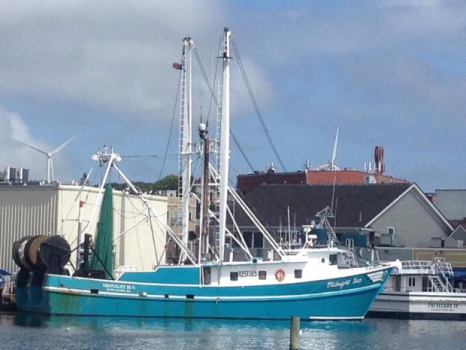 As some New England fishermen struggle under intense quota cuts, the industry is fearing another political move that could prove to have devastating consequences. There is an effort to designate Cashes Ledge — a historically important fishing area — as a national marine monument. This would require a presidential order and would effectively close the area to all commercial activity. About 80 miles off the coast of Cape Ann, a cold-water kelp forest grows from the tip of a ridge that rises from the ocean floor known as Cashes Ledge. Audio, Read the rest here 17:12
As some New England fishermen struggle under intense quota cuts, the industry is fearing another political move that could prove to have devastating consequences. There is an effort to designate Cashes Ledge — a historically important fishing area — as a national marine monument. This would require a presidential order and would effectively close the area to all commercial activity. About 80 miles off the coast of Cape Ann, a cold-water kelp forest grows from the tip of a ridge that rises from the ocean floor known as Cashes Ledge. Audio, Read the rest here 17:12
A fisherman’s doubt, and his love of the sea
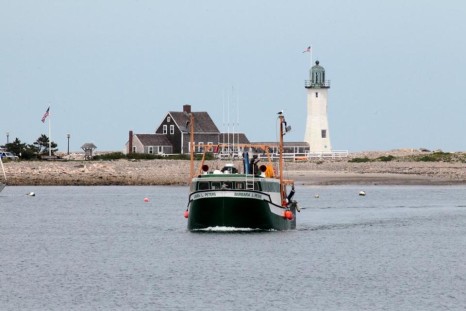 He is up before the dawn, and, a creature of steady habits, he heads for the seashore. It’s dark when Frank Mirarchi jumps into his black pickup truck, and dark still when he reaches Scituate Harbor. He parks on the town pier and stares at the ocean. But his 55-foot stern dragger is no longer moored there. Actually, the boat is there. But it’s no longer his. It was renamed last June after he sold it — a poignant punctuation point to Mirarchi’s half-century career as a commercial fisherman. Read the rest here 15:01
He is up before the dawn, and, a creature of steady habits, he heads for the seashore. It’s dark when Frank Mirarchi jumps into his black pickup truck, and dark still when he reaches Scituate Harbor. He parks on the town pier and stares at the ocean. But his 55-foot stern dragger is no longer moored there. Actually, the boat is there. But it’s no longer his. It was renamed last June after he sold it — a poignant punctuation point to Mirarchi’s half-century career as a commercial fisherman. Read the rest here 15:01
Gulf warming study based on bad science, stakeholders say
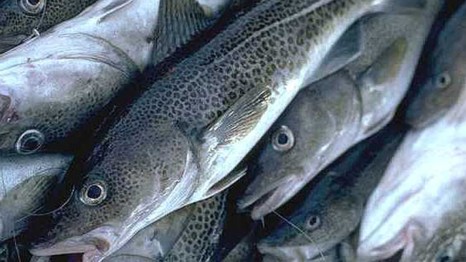 The study, performed by the Gulf of Maine Research Institute and appearing in the journal Science, concluded the Gulf of Maine’s surface water is warming more rapidly than 99.9 percent of the rest of the world’s oceans and that climate change is a contributing factor to the demise of the cod stock. “My first question was whether any part of the study started out to understand the true status of Gulf of Maine cod or if they just assumed that the data from the assessment — which we contend is consistently wrong — is fact,” said Vito Giacalone, policy director for the Gloucester-based Northeast Seafood Coalition. “I was told it was the latter.” Read the rest here 08:39
The study, performed by the Gulf of Maine Research Institute and appearing in the journal Science, concluded the Gulf of Maine’s surface water is warming more rapidly than 99.9 percent of the rest of the world’s oceans and that climate change is a contributing factor to the demise of the cod stock. “My first question was whether any part of the study started out to understand the true status of Gulf of Maine cod or if they just assumed that the data from the assessment — which we contend is consistently wrong — is fact,” said Vito Giacalone, policy director for the Gloucester-based Northeast Seafood Coalition. “I was told it was the latter.” Read the rest here 08:39






